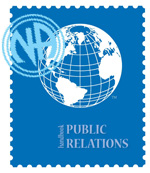Video PSA Project Planning
Make a contact list of the TV stations in the area. Call the station and ask for their mailing address and the names of the station manager, program director, public service director (PSD) and the news director. This is important, for you will be using them all at a later time.
Then pick the station you want to contact first and call to make an appointment with whoever handles PSAs. Have available different types and lengths of PSAs.
If you receive an appointment, then you have the opportunity to send trained volunteers to make a brief PI presentation. Take written information in order to share about who we are and what we are trying to do.
If you don’t receive an appointment in your initial telephone call, get as much information as possible into the technical requirements of the TV station. What format video tapes do they use? Is there a limit on length of PSA?
Remember to present information only. Don’t promote! The media has no responsibility to follow our traditions, that is our job.
Wherever possible, quote from or discuss NA Conference-approved literature. This will ensure a consistent message and provide information on the literature we have available.
All persons involved in the contact should feel prepared, be polite and be patient! Creating a good rapport with the media will make future contacts more productive.
If the Public Service Director doesn’t have time for an appointment, ask if you can drop off a PSA at the front desk. Make sure to include a cover letter or more information about NA so they will know what the content of the PSA is without having to view it. In each case, try to find out when they would start airing. Remember, most stations do not have a process for returning video tapes, so your committee should consider it as a donation. In smaller communities, you can sometimes develop a relationship with the PSD that will enable your tape to be reused or returned to you, but rarely is this possible in metropolitan areas.
Immediately after the contact is made, send a thank you note for the appointment and/or their time regardless of whether you got to see them or not.
In about two weeks, call the PSD and inquire when you might pick up your copy of the tape. This serves two purposes. One, the PSA won’t get lost in the shuffle. Two, it offers you the chance to enhance the relationship and show continued interest.
Always report to the ASC/RSC about which stations have the spot and ask groups to let you know if a member reports seeing it. This gives the opportunity to send another thank you letter to the station. This time, send it to the station manager, thanking him for the station’s efforts.
Take a new selection to each of your stations regularly and review their commitment to air your PSAs. The new 10-second TV PSAs are less expensive for the committee and may have a greater chance of being aired more often. You may want to discuss with the PSD, if possible, their preferences.
Keep a calendar of contact dates and action taken.
As always, regional and area boundaries must be considered prior to any contact. Although you may feel quite prepared for the outcome of any media contact, a nearby area that may be affected by the contact and might not be prepared.
The advantage of this type of contact is that you are asking the media to broadcast our message, rather than fulfilling their informational needs. It is important to have all information to be presented prepared prior to the actual contact.
Don’t get frustrated if your PSA effort does not seem to be resulting in new members or increased phoneline activity. At first, there may be a good deal of concern about phonelines being flooded with calls. In many cases, the amount of incoming calls stay about the same. Remember our primary purpose and if just one addict calls, it’s worth the effort.
